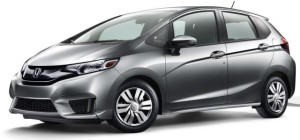 Before I delve deep into the subject, I would like to point out a few things first.
Before I delve deep into the subject, I would like to point out a few things first.
Traffic accident reconstruction is usually done by an expert whose main objective is to investigate, analyze and come to a logical conclusion on the actual reasons behind a traffic collision.
Three types of collision are taken into account. These are:
- A collision between two individual vehicles,
- A collision between a vehicle and a pedestrian.
- A collision between a vehicle and other on-road objects (ranging from a rock to a lamppost).
The outcome of a traffic accident usually depends completely on the findings of an accident reconstruction expert. The statement of the expert is considered valid and final in courts if everything’s found right in order.
In this article, I’ll discuss the ways through which an accident reconstruction expert actually works through the use of telematics data and on-scene evidences. It’s fascinating; there’s no doubt about it. Take a peek.
The Analysis
The accident reconstruction analysis is usually done on basis of six things that are:
- Collecting data
- Framing a hypothesis
- Creating individual models
- Recreating the accident
- Testing
- Using a simulation based software
Accident reconstruction analysis relies heavily on technology to recreate the accident as accurately as possible. A few examples of these hi-tech programs are:
- CAD
- Energy and momentum analysis programs
- Collision simulators
- Vehicle identity database
- Photogrammetry software
Analysis compilations into a presentation
After the completion of analysis, the reconstruction expert compiles his/her findings in form of representations through diagrams and animations such that even non-technical persons can understand it within a jiffy.
The accident reconstruction expert usually compiles his/her findings in the form of a video that can be used in courts as a part of the evidence.
Factors taken into accident for accident reconstructions
These factors are usually taken into account from the point of view of the driver. Some of these factors are:
- Driver perception and reaction: This is the phase when the driver realizes that a hazard’s up ahead. The time of reaction is estimated in this phase. Should be around 1.2 to 1.5 seconds.
- Steering or braking avoidance: The driver would surely try his best to avoid the hazard by attempting any trick under his belt to achieve that. This is the phase where the construction expert predicts how s/he uses the car’s braking and steering system to avoid the obstacle.
Accident scene evidence and eye witness statements throw much light on this.
- Sliding before collision: In many accident cases, the driver intentionally or unintentionally overuses the braking system to bring his/her vehicle to a halt. This often results in locking the front and rear wheels. In most of these cases, the vehicle slides forward a bit before crashing into the obstacle. That sliding distance is taken into account.
- Damage caused by collision: The damage inflicted on the vehicle along with the sliding distance is taken into consideration to calculate the speed of the vehicle prior to the collision.
- Additional movements after impact: This is the movement that occurs after the collision where the body is finally brought to a rest. This analysis also plays a role in predicting the speed of the vehicle prior to the accident.
How does an accident reconstruction expert actually work?
An accident reconstruction expert relies strongly on the combination of physics, mathematics and vehicle dynamics to make his/her report.
An accident reconstruction expert usually:
- Visit the accident scene to assess several things related to the incident ranging from skid marks on the road to the final position of the vehicle after collision. S/he will also take necessary measurements and photographs that can aid him/her in the final report.
- Examine the vehicle(s) associated with the accident for any *telematics data that can aid in the report.
- Review witness statements and other related data. S/He will strip off the core of that data and include it in her/his report as s/he deems fit.
- Perform simulations and find out the factors that played a big role in causing that accident.
How does telematics aid in the process?
Modern vehicles come with onboard Crash Data Recorders and Event Data Recorders. These tools can easily provide us with any form of crash data directly from the dashboards.
Such telematics data can definitely play a key role in shaping up the final report for evaluation.
So you see that the job is no mean. Plenty of technical knowledge is required to achieve several feats related to this task like handling the telematics data, reconstruction the accident in a simulation etc. But the entire process is definitely fascinating indeed.
With that, I’ll bring this article to a close for now. Hope you had a good read.
This content has been written by Katie Smith for Lerablog on behalf of http://firesafetyconsultant.com







